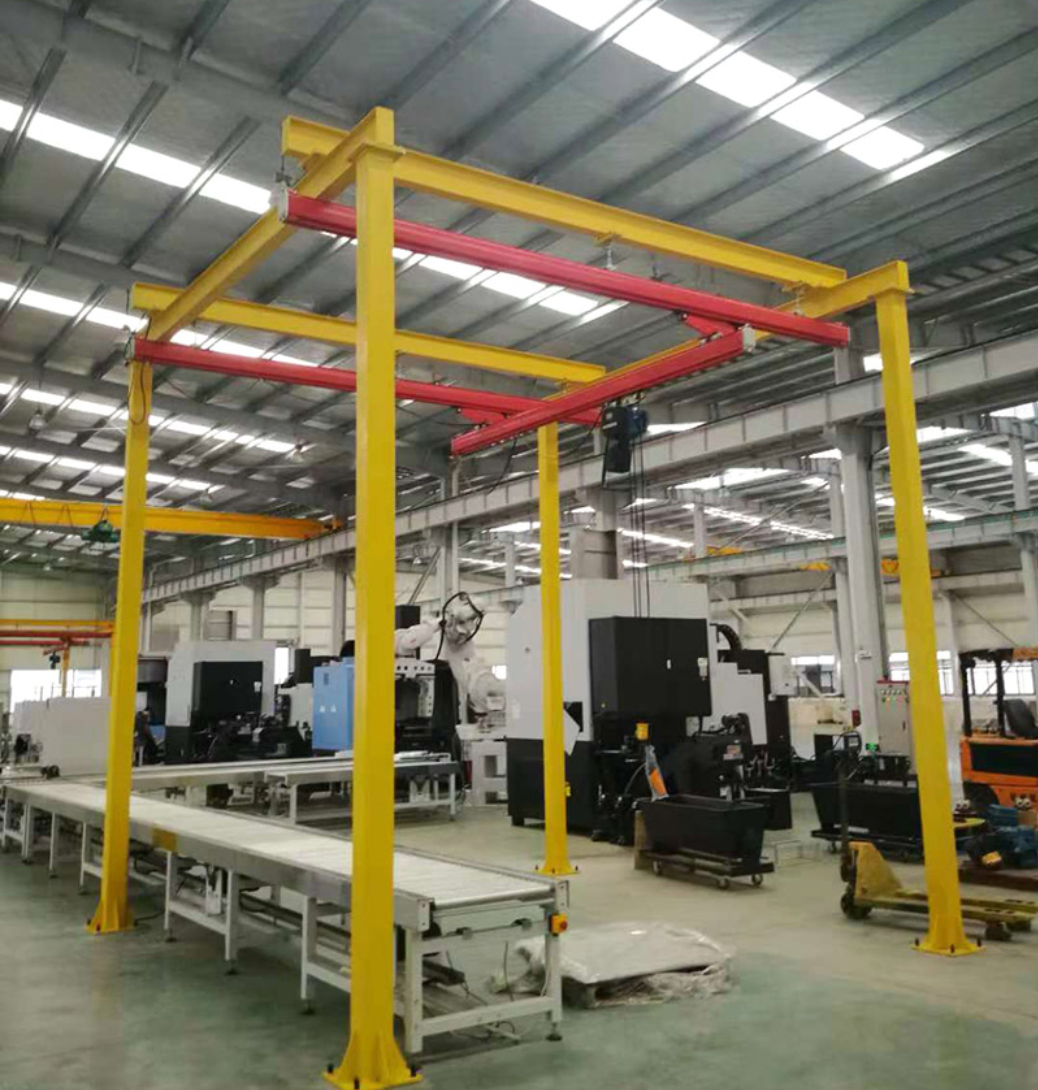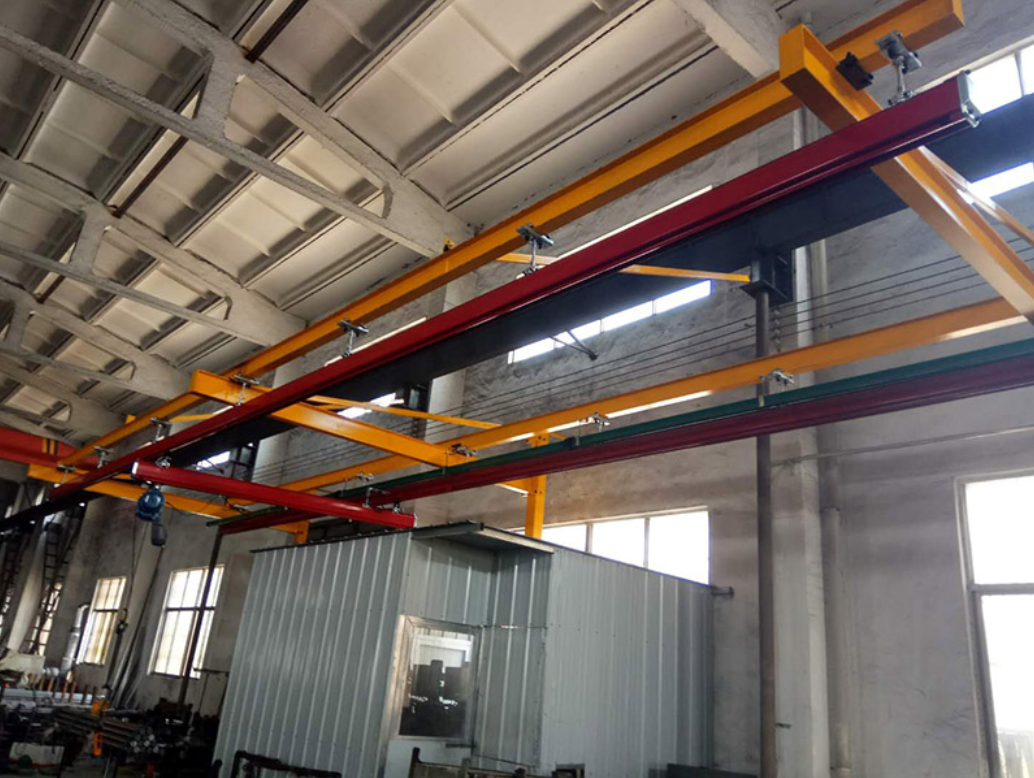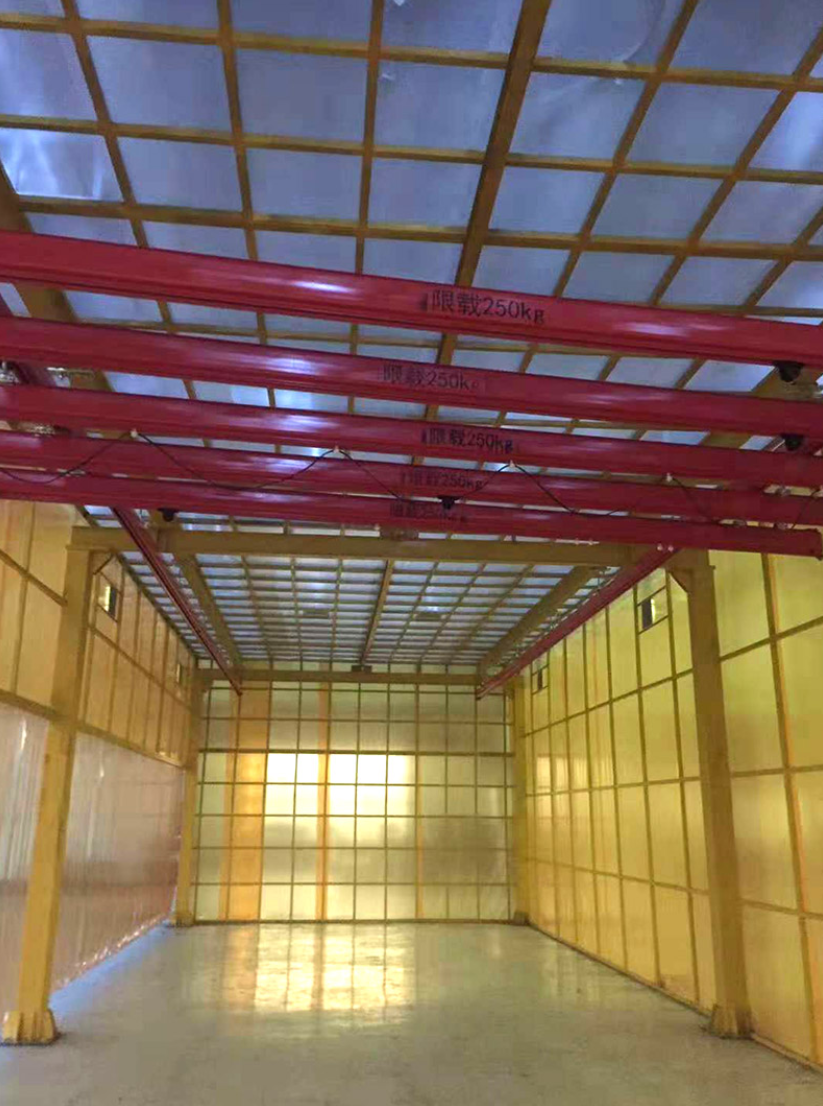What is a Bridge Crane?
A bridge crane, sometimes called an overhead bridge crane, is a type of non-mobile crane supported by a beam with a movable bridge that travels on beams suspended from overhead. This enables a load to be moved in three axes across any point within the crane's operating space, meaning it can move left and right, up and down, as well as across the floor.
Overhead bridge cranes are heavy-duty material handling equipment with high loading capacities. An operator steers a bridge crane manually or uses a wired pendant station or wireless controls. Bridge cranes are typically used for multi-directional material transport to help manufacturing, storing, loading, and unloading operations in an industrial facility.
Bridge cranes offer a wider range of motion and more flexibility than other overhead cranes. This makes them ideal for moving large or heavy loads in multiple directions, which can be especially helpful in manufacturing facilities where products are often transported between different workstations. Bridge cranes can also be used to load and unload trucks, making them an essential part of any supply chain.

Types of Bridge Cranes
There are a few different types of bridge cranes based on different factors, such as the number of hoists and how they work.
The most common type of bridge crane is a singer grider overhead or under running crane with one lifting device (hoist). It has two end trucks that run along a pair of rails that are installed on two runway beams. The trolley moves along the bridge and is used to transport material. The bridge has a capacity of up to 50 tons.
A double grider crane is the same as an overhead crane but with two bridges (girders) and two trolleys. This type of crane can handle heavier loads, up to 100 tons. It also requires more space than the single girder crane.
A top runnung bridge crane is used to lift and move heavy material, and the trolley travels right underneath the bridge. This type of crane is more expensive than an overhead crane but offers greater lifting capacity.
An under running bridge crane has a similar design as a top-running bridge but requires less headroom because the rails are mounted below the runway beams instead of above them.
Monorail cranes are used for lifting heavy loads. They can be free-standing or suspended from a ceiling and have one end truck that runs along the track.
A gantry crane is another type of bridge crane; however, it does not use an overhead beam to support its weight like most other types of bridge cranes do. Instead, it uses two legs that come down from the ceiling and rest on the floor. This crane can span a longer distance, up to 100 feet, and has a capacity of up to 25 tons.

Bridge crane advantages and disadvantages advantages
Overhead cranes offer significant advantages over other lifting devices, making them a preferred solution in many industrial applications:
High load capacity: Overhead cranes are designed to lift very heavy loads, making them ideal for applications where heavy materials or equipment need to be moved.
Flexibility in use: Thanks to the ability to lift loads vertically and transport them along the entire length of the rails, bridge cranes offer exceptional flexibility in the positioning of loads.
Efficiency and increased productivity: Overhead cranes can improve material flow by enabling fast, safe and precise positioning of loads, resulting in increased overall productivity.
Safety: Using cranes mounted above work areas minimizes the risk of ground obstructions and collisions, resulting in a safer working environment.
Adaptability: Overhead cranes can be customized to meet specific operational requirements, including the installation of additional features such as double trolleys, variable speed controls and different types of hoists.
The disadvantages
Despite their many advantages, overhead cranes also have some potential disadvantages and limitations that need to be considered:
High initial investment: The costs of purchasing and installing an overhead crane can be significant, which can be particularly challenging for smaller companies.
Space requirement: Overhead cranes require specific structures such as tracks and supports, which can impact the available space in a facility.
Maintenance requirements: To ensure safe and efficient operation, overhead cranes require regular maintenance and inspections, which can result in operational interruptions.
Complexity of operation: Operating a bridge crane requires trained personnel and can be challenging, especially when performing complex lifting operations.
Limited mobility: Compared to mobile crane systems, fixed bridge cranes offer less flexibility in choosing a location and are limited to the area covered by their tracks.

Conclusion
The decision for or against an overhead crane should be carefully considered by comparing the specific requirements and conditions of the operation with the advantages and disadvantages of these crane types.
The topic of overhead cranes covers a wide range of knowledge and practices that are essential for the efficient and safe handling of loads in industrial environments. Overhead cranes, with their various designs and applications, are an indispensable component in modern manufacturing, goods handling and many other areas. Their ability to transport heavy loads precisely and safely over long distances offers companies a significant increase in productivity and efficiency.
In summary, overhead cranes are considered critical tools for many industries. However, using them effectively requires careful planning, investment in equipment and training, and ongoing maintenance and safety monitoring. When used in the right environment and operated correctly, overhead cranes can help overcome operational challenges and ensure smooth material flow.

